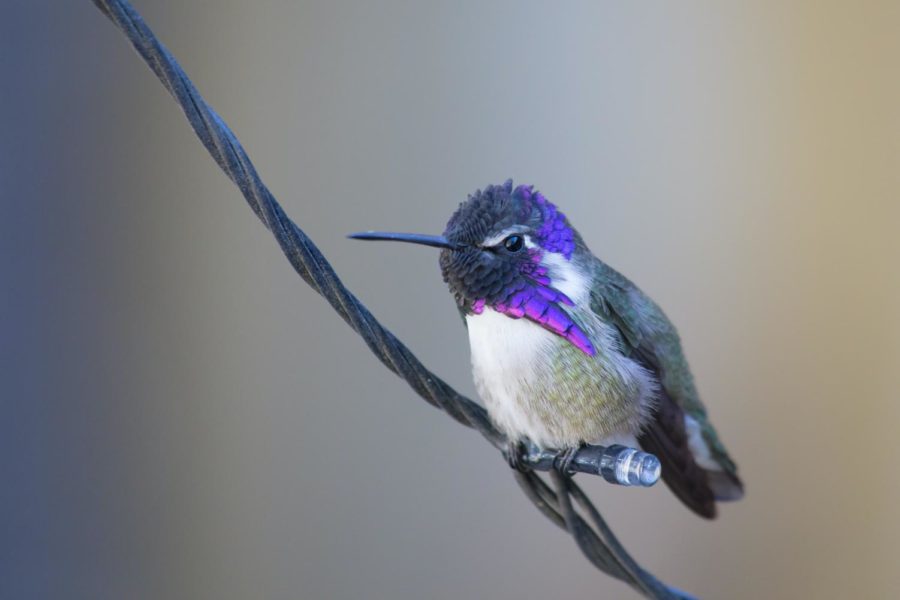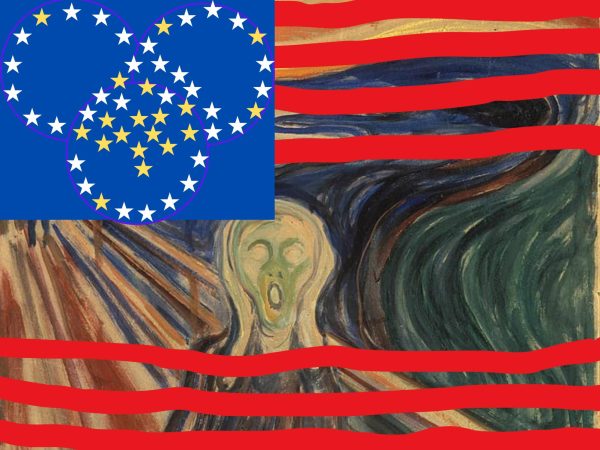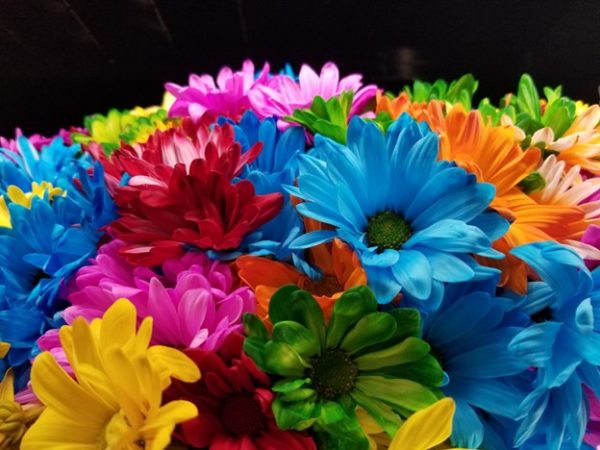Hummingbirds, Part 3 of 3
November 1, 2022

My territorial southern Arizona Costa’s hummingbird, named Junior, amused me with his antics and adventures. He designated himself as official greeter of “nuestra casa” and surprised a few unsuspecting visitors. His sudden appearance and rapid wing fluttering at the front door when people rang the doorbell amused me, but some thought he was a big bug attacking them. One visitor suggested I place a sign by my sidewalk: Beware of Hummingbird.
I enjoyed Junior’s companionship and he liked his nectar, supplied fresh by me each morning. Visitors listened to my stories about his feeding routine, wanting to see Junior drink nectar if they held his feeder. They were disappointed. He only trusted me. Occasionally Junior perched on my finger, looking at me with one eye, then the other. I wondered what he was thinking. I told him he was a handsome boy and he seemed pleased with my soft-spoken words. Sometimes, he hovered in front of me, almost kissing me with his beak as his wings fanned my face. Was he telling me something? Showing affection? No, just curious, a hummers’ trait.
One early spring day, Junior didn’t greet me. I worried an invader hummer had hurt him, or worse. He reappeared without explanation. Mating season arrived but I missed his elaborate air show courtship. He vanished again during molting season. Seemingly embarrassed, he kept himself hidden from me until he proudly reappeared in perfect plumage. Junior welcomed rainy days and he liked to splash in water, either on a curled leaf after a rainstorm or in our Mexican fountain. He wiggled around to get all his feathers wet and clean. When I watered flowers with a garden hose, Junior flew into the stream of water for a quick shower, flying forward, backward, upside down.
Junior survived monsoon rains, hundred degree plus temperatures, desert windstorms and rare snowflakes. His feathers protected him as he perched under leaves of his favorite tree or shrub. During cold weather, hummingbirds’ heart rates decrease as they enter torpor, their version of hibernation. On chilly nights, I placed frost covers on tender plants, removing them when the sun warmed the air. One morning I pulled the cover off a small plant before the sun spotlighted it, surprised to find Junior asleep under the frost cover for extra warmth. He looked at me with one eye partially open and an annoyed look on his handsome face.
We enjoyed happy times together, watching Gambel’s quail hatch in flower pots, bobcats nurse under our orange tree, lizards protrude from roadrunners’ mouths, javelina families march single file outside our fence, coyotes howl as deer danced across the golf course, and mountain lions meander up the foothills. One winter as an artic front approached, I shrouded plants to prevent frostbite. Junior observed my readying his shelter. When I checked on him before bedtime, he flew to me, snuggling against my neck. I caressed him, then he sipped nectar and flew to his shelter.
Before dawn, I looked outside. Junior was asleep on the patio below his frozen feeder. Distraught, I picked him up to warm him. Local news reported thousands of older hummingbirds died across our area due to unusual frigid temperatures. Later that day, while removing frost covers, I spotted Junior perched in his favorite tree. I rubbed my eyes in disbelief. It was not Junior, but perhaps Junior’s son or grandson. I named him Homer. When I moved to North Carolina, my former neighbors reported Homer wondered where I went. Luckily, a new homeowner promptly arrived for him to amuse—and pester for nectar.




















